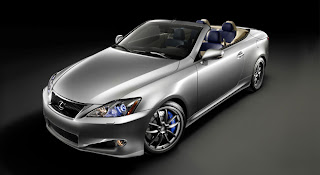
Mercedes McLare
The Mercedes McLaren is an Anglo-German grand tourer car jointly developed by Mercedes-Benz and McLaren Automotive, built in Portsmouth and the McLaren Technology Centre in Woking, Surrey, England and sold from 2003 to 2009. When it was developed, Mercedes-Benz owned 40 percent of the McLaren Group.
Mercedes McLaren
Due to the automatic gear box, front mid-engined arrangement, and its driving characteristics, some commentators classify the SLR McLaren as a GT, whose rivals would be vehicles such as the Aston Martin DBS V12 and Ferrari 599 GTB Fiorano.
Mercedes McLaren
SLR stands for "Sport, Leicht, Rennsport" (sport, light, racing). Mercedes-Benz stated that they would build 3,500 SLRs over seven years, with an annual production of 500 cars. The car's base price, GB£ 295,337 (approx. US$ 450,000, € 350,000, CHF 500,000 or C$ 500,000. 2009), made it the ninth most expensive street-legal car in the year 2008.The SLR sports a 232 kg (510 lb) hand-built 5,439 cc (5.439 L; 331.9 cu in), supercharged, all-aluminium, SOHC V8 engine. The cylinders are angled at 90 degrees with three valves per cylinder and lubricated via a dry sump system. The compression ratio is 8.8:1 and the bore and stroke is 97 millimetre (3.82 in) and 92 millimeters (3.62 in), respectively. The Lysholm-type twin-screw supercharger rotates at 23000 revolutions per minute and produces 0.9 bar (13 psi) of boost. The compressed air is then cooled via two intercoolers. The engine generates a maximum power of 626 PS (460 kW; 617 hp)@6500rpm and maximum torque of 780 N·m (580 lb·ft)@3250-5000rpm.
Unlike most of its contemporaries, its engine is front-mid mounted. McLaren took the original concept car designed by Mercedes and moved the engine 1 metre (39.4 in) behind the front bumper, and around 50 centimetres (19.7 in) behind the front axle. They also optimized the design of the center firewall.
The car uses carbon fibre for its entire body construction in an attempt to keep the weight low. Despite CFRP materials the total curb weight is 1,750 kg (3,858 lb).
Car and Driver achieved a 0-60 mph (100 km/h) time of 3.4 seconds, and a quarter-mile time of 11.2 seconds at 130 mph (209 km/h) C&D suggests the times may be even lower if temperatures were lower. Motor Trend tested the SLR and achieved a 0-60 mph time of 3.3 seconds in April 2006. Car and Driver achieved top gear acceleration 30-50 mph and 50-70 mph times of 1.7 and 2.4 seconds, which are the fastest ever recorded by the magazine in a production car. The SLR also pulled 1.13 g on the skidpad.
Road and Track tested the car in their July 2005 Road Test and reached 60 mph (97 km/h) from a standstill in 3.5 seconds. The 0 - 100 mph (160 km/h) sprint was achieved in 7.5 seconds and a quarter mile run was completed in 11.5 seconds at 126 mph (203 km/h).
In June 2004 the SLR was tested at Nardo and performed the 0-100 km/h (62 mph) exercise in 3.8 seconds, 0-200 km/h (124 mph) in 10.7 seconds and 0-300 km/h (190 mph) in 30.6 seconds.
Courtesy By:











































































